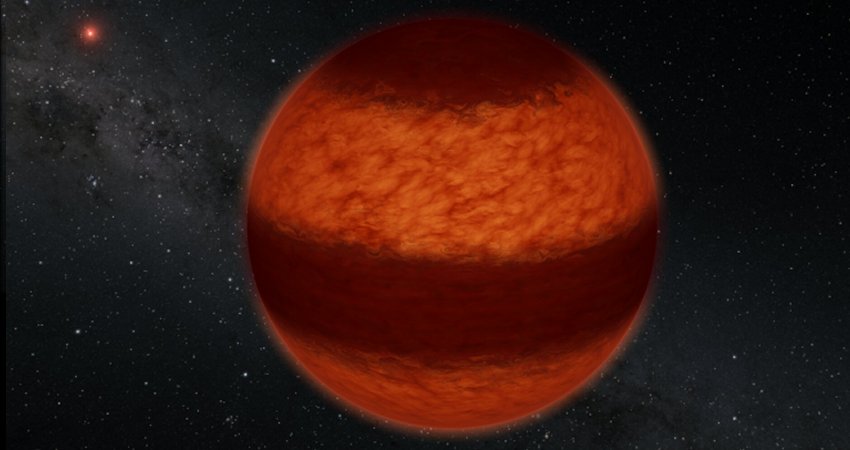Gigantic ‘Chimneys’ Extending Hundreds Of Parsecs Above And Below Milky Way’s Center
A. Sutherland – AncientPages.com – In Universe there are many gigantic objects and phenomena, of which many we still are unaware of. Some of them we’ve already discovered and observed.
An interesting recent discovery reveals two gigantic ‘chimneys’ funneling hot X-ray matter flowing out from Sagittarius A*, the Milky Way’s supermassive black hole, directly into two huge cosmic bubbles.
An X-ray view of the centre of our Milky Way galaxy, where the supermassive black hole Sagittarius A* is hosted. ESA/XMM-Newton/G. Ponti et al. 2019, Nature. source
First of the giant bubbles (both discovered in 2010 by NASA’s Fermi Gamma-ray Space Telescope), extends over the plane of the Milky Way; the other below, forms a huge hourglass that stretches for about 50,000 light years – about half the diameter of the entire Galaxy.
The chimneys recently discovered by ESA’s XMM-Newton seem to link the immediate surroundings of the black hole and the bubbles together. Thanks to data delivered by XMM-Newton satellite, researchers created the most extensive X-ray map ever made of the Milky Way’s core. Thus, the chimneys, extending for hundreds of light years, were also discovered.
Could these channels be exhaust pipes through which energy and mass are transported from our Galaxy’s heart out to the bubbles?
The outflow might be a remnant from our Galaxy’s past, when activity was far more powerful and extreme. Now, our galaxy is considered to be ‘quiescent’ but as XMM-Newton has revealed our Galaxy’s core is still quite tumultuous and chaotic. Dying stars explode violently, throwing their material out into space; binary stars whirl around one another.
We must not forget Sagittarius A*, a black hole as massive as four million Suns, that lurks waiting for incoming material to devour, later belching out radiation and energetic particles as it does so.
“We know that outflows and winds of material and energy emanating from a galaxy are crucial in sculpting and altering that galaxy’s shape over time — they’re key players in how galaxies, and other structures, form and evolve throughout the cosmos,” said lead author Gabriele Ponti of the Max Planck Institute for Extraterrestrial Physics in Garching, Germany. “Luckily, our galaxy gives us a nearby laboratory to explore this in detail, and probe how material flows out into the space around us.”
Mark Morris, a UCLA professor of astronomy and astrophysics, and a contributor to this research, said that “the centers of the nearest galaxies are hundreds to thousands of times farther away than our own”.
“The amount of energy coming out of the center of our galaxy is limited, but it’s a really good example of a galactic center that we can observe and try to understand.”
Written by – A. Sutherland – AncientPages.com Senior Staff Writer
Expand for references




![galaxy candidate is some 13.5 billion light-years away and is described Thursday in the Astrophysical Journal. In an accompanying paper published in the Monthly Notices of the Royal Astronomical Society Letters, scientists have begun to speculate exactly what the galaxy is. The team proposes two ideas: HD1 may be forming stars at an astounding rate and is possibly even home to Population III stars, the universe's very first stars—which, until now, have never been observed. Alternatively, HD1 may contain a supermassive black hole about 100 million times the mass of our Sun. "Answering questions about the nature of a source so far away can be challenging," says Fabio Pacucci, lead author of the MNRAS study, co-author in the discovery paper on ApJ, and an astronomer at the Center for Astrophysics. "It's like guessing the nationality of a ship from the flag it flies, while being faraway ashore, with the vessel in the middle of a gale and dense fog. One can maybe see some colors and shapes of the flag, but not in their entirety. It's ultimately a long game of analysis and exclusion of implausible scenarios." HD1 is extremely bright in ultraviolet light. To explain this, "some energetic processes are occurring there or, better yet, did occur some billions of years ago," Pacucci says. At first, the researchers assumed HD1 was a standard starburst galaxy, a galaxy that is creating stars at a high rate. But after calculating how many stars HD1 was producing, they obtained "an incredible rate—HD1 would be forming more than 100 stars every single year. This is at least 10 times higher than what we expect for these galaxies." That's when the team began suspecting that HD1 might not be forming normal, everyday stars. "The very first population of stars that formed in the universe were more massive, more luminous and hotter than modern stars," Pacucci says. "If we assume the stars produced in HD1 are these first, or Population III, stars, then its properties could be explained more easily. In fact, Population III stars are capable of producing more UV light than normal stars, which could clarify the extreme ultraviolet luminosity of HD1." Timeline displays the earliest galaxy candidates and the history of the universe. Credit: Harikane et al., NASA, EST and P. Oesch/Yale. A supermassive black hole, however, could also explain the extreme luminosity of HD1. As it gobbles down enormous amounts of gas, high energy photons may be emitted by the region around the black hole. If that's the case, it would be by far the earliest supermassive black hole known to humankind, observed much closer in time to the Big Bang compared to the current record-holder. "HD1 would represent a giant baby in the delivery room of the early universe," says Avi Loeb an astronomer at the Center for Astrophysics and co-author on the MNRAS study. "It breaks the highest quasar redshift on record by almost a factor of two, a remarkable feat." HD1 was discovered after more than 1,200 hours of observing time with the Subaru Telescope, VISTA Telescope, UK Infrared Telescope and Spitzer Space Telescope. "It was very hard work to find HD1 out of more than 700,000 objects," says Yuichi Harikane, an astronomer at the University of Tokyo who discovered the galaxy. "HD1's red color matched the expected characteristics of a galaxy 13.5 billion light-years away surprisingly well, giving me a little bit of goosebumps when I found it." The team then conducted follow-up observations using the Atacama Large Millimeter/submillimeter Array (ALMA) to confirm the distance, which is 100 million light years further than GN-z11, the current record-holder for the furthest galaxy. Using the James Webb Space Telescope, the research team will soon once again observe HD1 to verify its distance from Earth. If current calculations prove correct, HD1 will be the most distant—and oldest—galaxy ever recorded. The same observations will allow the team to dig deeper into HD1's identity and confirm if one of their theories is correct. "Forming a few hundred million years after the Big Bang, a black hole in HD1 must have grown out of a massive seed at an unprecedented rate," Loeb says. "Once again, nature appears to be more imaginative than we are." Explore further Astronomers confront massive black hole at the heart of the Milky Way, Sagittarius A* More information: A Search for H-Dropout Lyman Break Galaxies at z~12-16, arXiv:2112.09141 [astro-ph.GA] arxiv.org/abs/2112.09141 , Accepted for publication in MNRAS Letters. Are the newly-discovered z∼13 drop-out sources starburst galaxies or quasars?, arXiv:2201.00823 [astro-ph.GA] arxiv.org/abs/2201.00823 , Accepted for publication in ApJ. Journal information: Astrophysical Journal , Monthly Notices of the Royal Astronomical Society Letters , Monthly Notices of the Royal Astronomical Society Provided by Harvard-Smithsonian Center for Astrophysics Facebook Twitter Email Feedback to editors Featured Last Comments Popular Megathrust earthquake and tsunami 3,800 years ago kept hunter-gathers in Chile inland for 1,000 years 4 HOURS AGO 1 Identifying the basic structure of the language of fungi 6 HOURS AGO 0 Two new Saturn-mass exoplanets discovered 6 HOURS AGO 1 Astronomers inspect nova T Aurigae with Hubble APR 06, 2022 1 Astrophysicists theorize a new type of neutron star APR 06, 2022 1 Team develops a universal AI algorithm for in-depth cleaning of single cell genomic data 5 MINUTES AGO Engineers describe how fluid suspensions exhibit different behaviors at different scales 50 MINUTES AGO Researchers develop glass-in-glass fabrication approach for making miniature IR optics 50 MINUTES AGO Research team unlocks new method to 3D-print complex, functional components for soft robotics 1 HOUR AGO World's largest International Dark Sky Reserve created 1 HOUR AGO Researchers engineer electrically tunable graphene devices to study rare physics 1 HOUR AGO Research shows 'raised without antibiotics' label claim in beef cattle lacks integrity 1 HOUR AGO Relevant PhysicsForums posts Does there exist a metal that is 100% unrustable? 33 MINUTES AGO B: Calculate the distance between two points without using a coordinate system 35 MINUTES AGO Site feedback 39 MINUTES AGO De Laval nozzle exit pressure 58 MINUTES AGO Random Thoughts part 6 1 HOUR AGO Chernobyl loses power, spent fuel storage question #Ukraine 1 HOUR AGO More from Physics Forums | Science Articles, Homework Help, Discussion 1 2 Medical Xpress Medical research advances and health news Tech Xplore The latest engineering, electronics and technology advances Science X The most comprehensive sci-tech news coverage on the web Newsletters Email Science X Daily and the Weekly Email Newsletter are free features that allow you to receive your favorite sci-tech news updates in your email inbox Follow us Top Home Search Mobile version Help FAQ About Contact Science X Account Sponsored Account Archive News wire Android app iOS app RSS feeds Push notification © Phys.org 2003 - 2022 powered by Science X Network Privacy policy Terms of use 1 / 1HD1, object in red, appears at the center of a zoom-in image. Credit: Harikane et al.](https://www.messagetoeagle.com/wp-content/uploads/2022/04/farthestgalaxy009-307x150.jpg)





